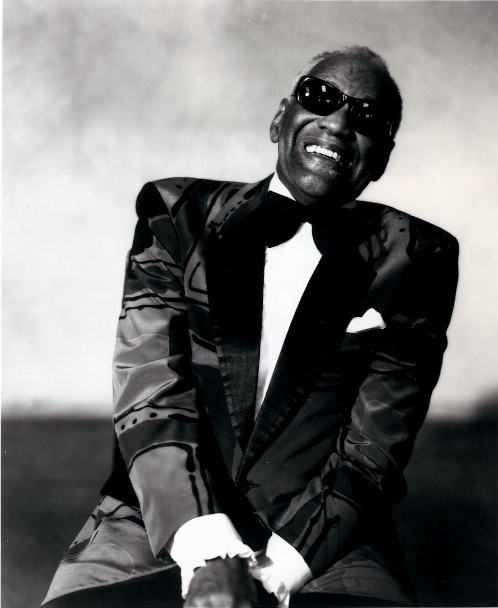Entertainment Magazine: Film: Ray Charles
Loving Ray Charles:
The Women in His Life
Mary Ann Fisher
Mary Ann Fisher, who, according to Charles’
autobiography, served as his inspiration for the songs “Mary Ann,”
“What Would I Do Without You” and “Leave My Woman Alone”—joined Ray on
tour in 1955 and performed vocals in the act even after the 1957
addition of the Raelettes; she left the band (and her romance with
Charles) in 1958.
“One of the things I found really
interesting about Mary Ann,” supplies Aunjanue Ellis, who portrays her,
“was that her involvement in Ray’s life and his music played an
influential role.
She was there just when his sound began to
expand to include female vocals—and also when his attentions began to
veer away from his wife and marriage.
She was one of the first talented singers whose life and art became professionally and personally intertwined with Ray’s.”
Aunjanue’s performance as the feisty Mary
Ann registered strongly with Hackford, who says, “Aunjanue is remarkably
adept at bringing out a whole range of Mary Ann’s colors in a
relatively brief space of screen time.
She’s incredibly sexy and memorable in the
role.” But perhaps the woman who most weighed on Ray Charles’ mind
throughout his life was his mother, who would not allow her son to get
discouraged by his blindness for even a second.
She once told him, “You’re blind, not dumb; you lost your sight, not your mind.”
Taking on the role of Aretha Robinson is
actress Sharon Warren, who prior to being cast in Ray had worked
primarily in Southern regional theater.
More Ray Charles women: Della Robinson, Regina King and Margie Hendricks
Hackford remembers the serendipitous nature
of casting the woman who would bring Ray’s mother to life and says,
“During our search to find an actor to play the young Ray, a woman
walked into our office in Atlanta, Georgia. She had a headshot, but she
didn’t even know what movie we were making.
She had a lot of charisma, a lot of energy. I
gave her a couple of pages of dialogue, she looked at it for 15
minutes, and then I put her on tape. While we were taping, I thought,
‘My God, this is Aretha.’ I hadn’t been able to find an actress who
could embody what Ray Charles told me his mother was—a bone-thin person
who had died when she was 31, but who had incredible fierceness of
spirit, incredible strength. He gave her credit for who he was in life.
He said, ‘This was the most important person in my life.’
That’s a heady recipe to have to satisfy. And Sharon Warren walked in off the street—that is a Cinderella story.”
Hackford had later played a scene for
Charles involving Warren, where the words scripted for the actress had
come directly from Charles’ memory of Aretha. He says, “He was listening
in his inscrutable way, and then he started talking to the screen,
saying, ‘Yes, that’s right. That’s the truth.’”
Warren dove into the role by doing as much
research as was possible into a woman who died, tragically and
anonymously, in her early 30s.
“The greatest help I received in creating
this character was my 87-year-old grandmother, Annie Lou Gould Walker,
who shared her life stories about the rural South during those times.
Unfortunately, my grandmother died just
before I began working on Ray. I am also eternally grateful to Ray
Charles, Jr. for the intimate portrait he shared with me of his
grandmother and her life. I also gained great insights from screenwriter
James L. White and valuable advice from director Taylor Hackford.
“Aretha’s history is very mysterious,” she
comments. “What we do know is that she was very, very poor and very
frail. She washed clothes to make money because that’s the only thing
she could do. She worked hard to provide for her children, because she
loved them.
When she lost George and Ray went blind, she
still did not give up. She was determined to prepare Ray to take care
of himself, despite his blindness.”
Warren continues: “She demonstrated ‘tough
love’ for Ray because she knew that, if he was going to survive in the
world, he was going to have to be extremely strong.
She knew what it was like to be an outcast, to be seen as a cripple and she didn’t want that for her son.
The more I thought about her and what she
went through, the more I wanted to give as authentic and powerful a
performance as I could, so this woman would be known to the world.”
Read more about Ray Charles

Photo: Ray Charles © 1993 Warner Bros. Records. Photo credit by Mark Hanauer.
From the film, Ray Charles. Universal Studios
© 2004-2015 EMOL.org Film Entertainment Magazine.
|